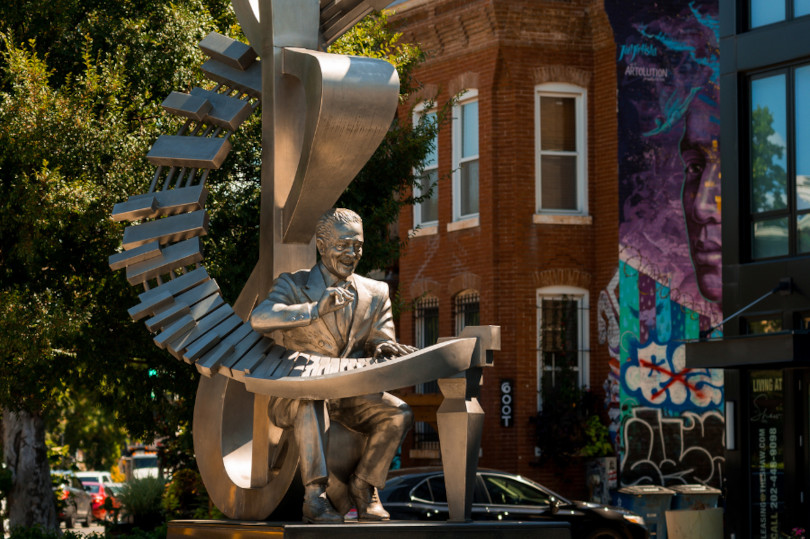There are few communities and cultures as distinctive as those of Black Washington, DC. It simply cannot be mistaken for any other enclave of Black experience. Nowhere else will you find so much pride being taken in go-go, half-smokes, and knowing which restaurant mixes the best mumbo sauce. Nowhere else can you reliably expect to hear Chuck Brown blaring from the speakers of a Polaris Slingshot every weekend, its futuristic chassis outfitted with a rainbow of LED lights. Around every corner, whether you find a towering mural or hear a certain bass-and-snare-driven rhythm, there’s something to signify where you are.
Just as palpable and evident as this culture is the sense that it’s being actively threatened. Ask fifty Black Washingtonians what the greatest difference between the city they grew up in and the city they live in is, and you just might hear “gentrification” fifty times. The city once affectionately known as Chocolate City has gradually lost much of its trademark hue. Many locals remember when in 2011 the city’s Black population fell beneath fifty percent for the first time in a half century.
In addition to the community, the culture is also being encroached upon. A prominent example was the brief silencing of a beloved go-go-playing Metro PCS store in the city’s historically Black Shaw neighborhood. But almost as soon as the music was shut off, fierce community backlash—including a petition spread by Mayor Muriel Bowser and signed by eighty thousand go-go lovers—brought it back.
In this triumph we find another quintessential characteristic of Black DC, and of Black America at large: the willingness to fight back. The strength of Black DC culture isn’t only found in its traditions and trademarks, but also in fortitude. The city raised this community from its birth. Naturally, the community defends it as if it were family, for it is.
Lest we forget the greatest possible testament to this community’s fortitude, being its proximity to the United States government. The federal government (and particularly its current iteration) poses a serious existential threat to African Americans. I don’t exaggerate in saying that the people plotting Black America’s demise live in Black Washington’s backyard. Perpetually sleeping with the enemy—and having no choice but to—is no easy task. But it is one that Black DC surmounts time and time again. In spite of all the White House has done to them, still they resist, still they fight, and still they dance.
It is for these reasons that the Black residents of Washington, DC can and should be seen as Black resistance in microcosm. They have weathered too many storms to count, yet their culture lives on, piercing through whatever is thrown their way. No wonder they blast go-go at deafening volumes and never cease to express their cultural pride—can you blame them? DC is more than worthy of celebration. In fact, it is worthy of emulation, for in the District’s playbook we find the greatest Black tradition of all: rising above.
Featured image courtesy of fitdc.com.


